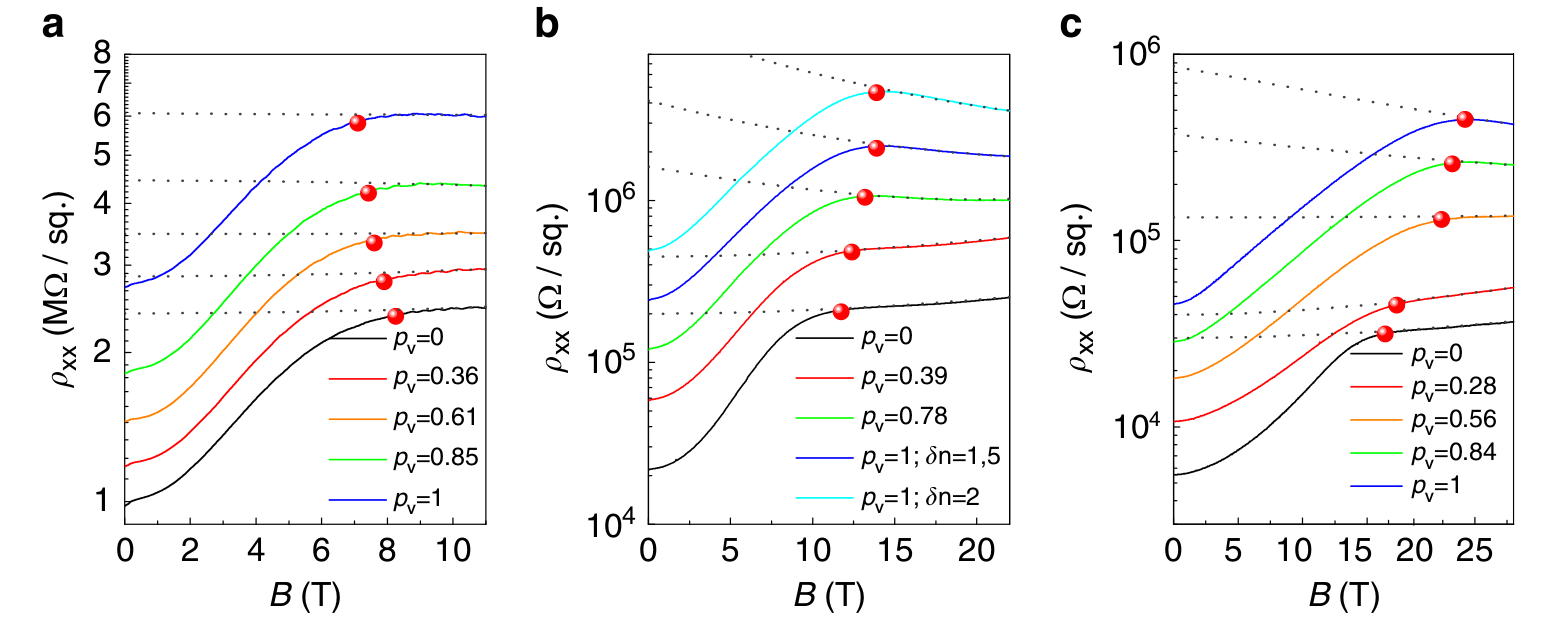A collaboration with Bath university (UK), NTT BRL (Japan), Tohoku University (Japan) and CEA

Valleytronics is rapidly emerging as an exciting area of basic and applied research. In two-dimensional systems, valley polarization can dramatically modify physical properties
through electron-electron interactions as demonstrated by such phenomena as the fractional quantum Hall effect and the metal-insulator transition. Here, we have addressed the electrons’ spin
alignment in a magnetic field in silicon-on-insulator quantum wells under valley polarization. In stark contrast to expectations from a non-interacting model, we show experimentally that
less magnetic field can be required to fully spin polarize a valley-polarized system than a valley-degenerate one. This is illustrated in the above figure which displays the resistance of the 2DEG in a Silicon on Insulator quantum well.
The field of full spin polarisation is achieved when the resistance saturates and is indicated by a red point. For low density (Panel a), the field of full spin polarisation decreases as valley polarization is increased. These observations are quantitatively
described by parameter-free ab initio quantum Monte Carlo simulations. We interpret the results as a manifestation of the greater stability of the spin- and valley-degenerate system against ferromagnetic instability and Wigner crystalization, which in turn suggests the
existence of a new strongly correlated electron liquid at low electron densities..
Read more in
V. T. Renard et al. Nature Communications. 6, 7230 (2015)